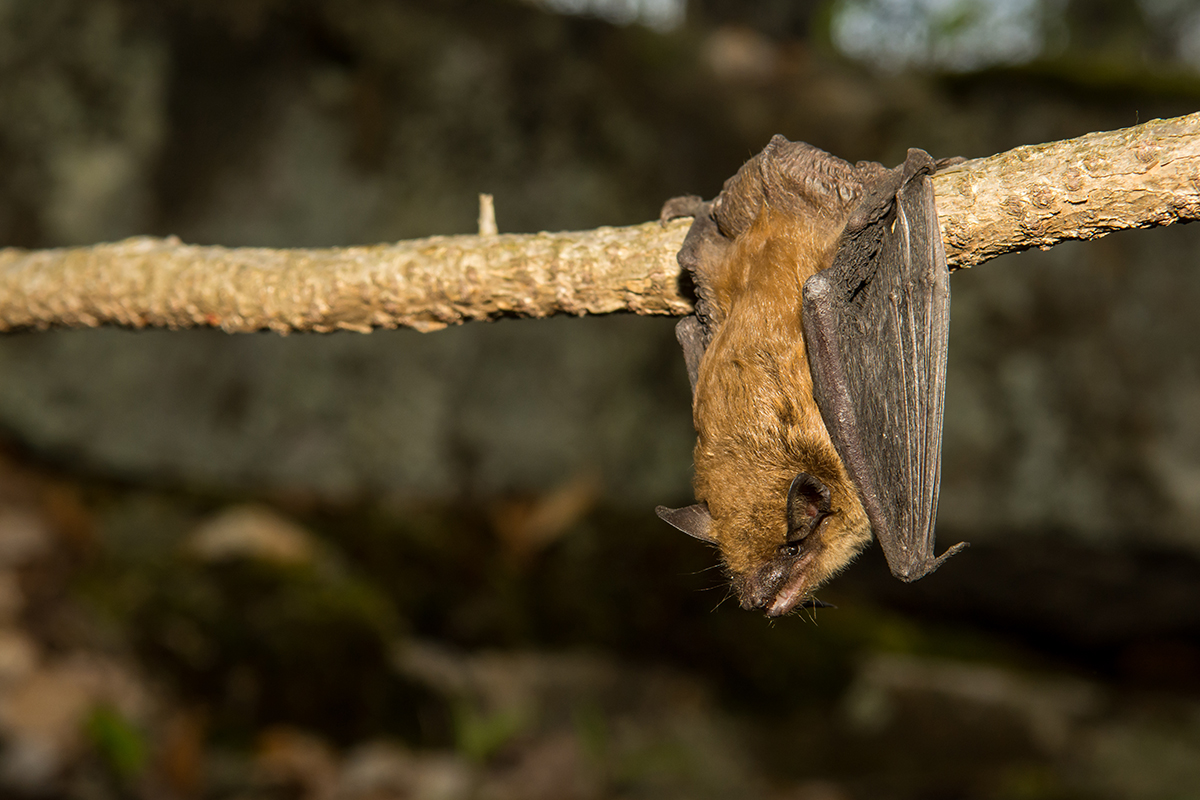To ensure you’re receiving the most up-to-date and accurate information, please choose the correct agency from the homepage. The DHEC website is no longer being updated and will be permanently unavailable Dec. 31, 2024.
Bats are Good for Our Ecosystems
South Carolina is home to 14 bat species. These bats play a major role in keeping the mosquito population down. They also eat other insects, pollinate flowers and other plants, and help disperse seeds.

Behavior
Bats are nocturnal and they use echolocation to locate fast moving insects. This is why you may observe quick swoops and directional changes when bats are in flight.
Many bats prefer to roost during the day in isolated, naturally occurring crevices of caves, cliffs, and tree hollows but may also be found in unfrequented buildings, attics, roofs, soffits, walls, etc. Bats prefer to hang upside down to allow them to properly launch and gain flight momentum. Unlike birds, bats are not physically designed for takeoff from the ground.
Consult the South Carolina Department of Natural Resource’s webpage for more information on South Carolina bats.
Bat Exposures
Bats can transmit rabies to people through bites or the introduction of saliva into open wounds or areas such as the eyes, nose, or mouth. You cannot tell just by looking at a bat, or any other animal, if it is infected with the rabies virus. It is vitally important to identify any persons or pets who have had potential contact with a bat.
People, especially children, may not realize when they have been bitten by a bat as it is easy to overlook bite marks from tiny bat teeth. If you find a bat in a room (or a tent) where a person or pet has been sleeping or where children or persons with impaired mental capacity have been unattended, always assume the bat has bitten the person or pet.
Bat contact/exposure is defined as:
- Waking up to find a bat in the room;
- Finding a bat where children, pets, or persons with impaired mental capacity (intoxicated or mentally disabled) have been left unattended; and/or
- A pet or person that has been in direct contact with a bat.
Bats Found in Living Spaces
Prevent Bat Intrusion & Disruption (Resource Page)
If you find a bat in your home:
- Do not let the bat leave your home and do not touch the bat.
- If possible, confine the bat to one room by closing all doors and windows.
- The bat will need to be captured. Options for capturing a bat include:
- Call a wildlife control operator who will likely charge a fee for removal.
- Seek medical attention when a confirmed or suspected exposure (to include waking to find a bat in the room) has occurred.
DHEC does not recommend that homeowners/persons who are not wildlife control professionals try to remove the bat, but if necessary, please consult the CDC Website or watch the New York State Health Department’s video on how to capture a bat.
If you discover bats in your attic, soffits, or walls, make sure there is no way they can get into your living quarters. If you find bats in your home, contact a wildlife control operator for guidance on how to remove the bats. Seal any openings once all the bats are gone. CDC provides further information on how to "bat-proof" your home.
Testing Bats for Rabies
Captured bats should be secured (small box taped shut, plastic container with lid, etc.) and kept cool. Bats are very fragile and using any force against them may render them untestable.
Bats decompose very easily. Keep the bat cool by placing the secured container the bat is in on an ice pack. Do not freeze the animal.
- Contact your local rabies prevention program investigator for information on how to submit the bat for testing.
- Report any abnormal conditions of the bat (i.e., stiff, dried out, odors, etc.).
Pets and Bat Exposures
If your pet has encountered a bat:
- Safely secure the bat by contacting a wildlife control operator by following information from the CDC or the New York State Health Department’s video on how to capture a bat.
- Contact your local veterinarian.
- Contact your local rabies prevention program investigator.
How to Care for a Bat Bite
If you are bitten by a bat or if saliva or brain material from a bat gets into someone's eyes, nose, mouth, or an open wound:
- Wash the area thoroughly with soap and water.
- Seek medical help. Contact a health care provider.
- Contact the local rabies prevention program.